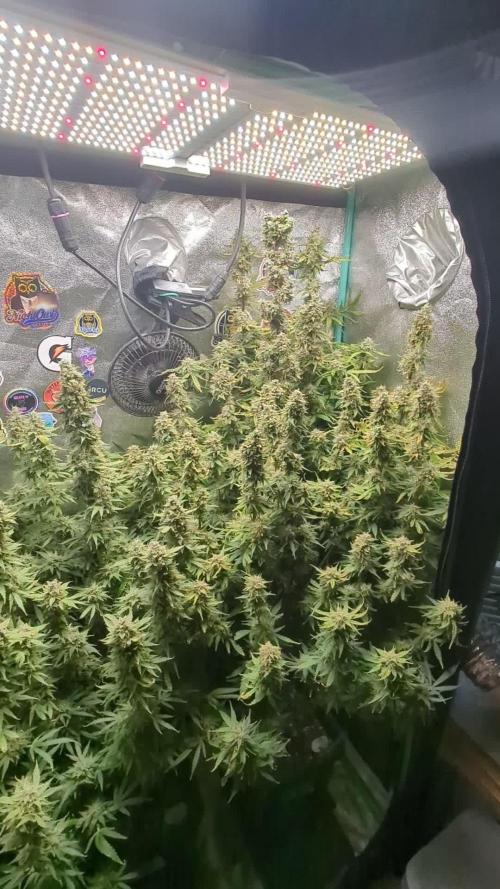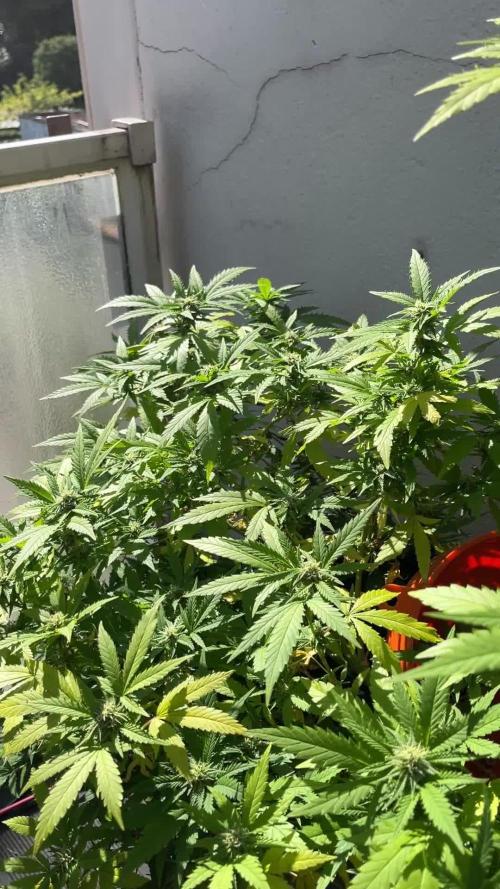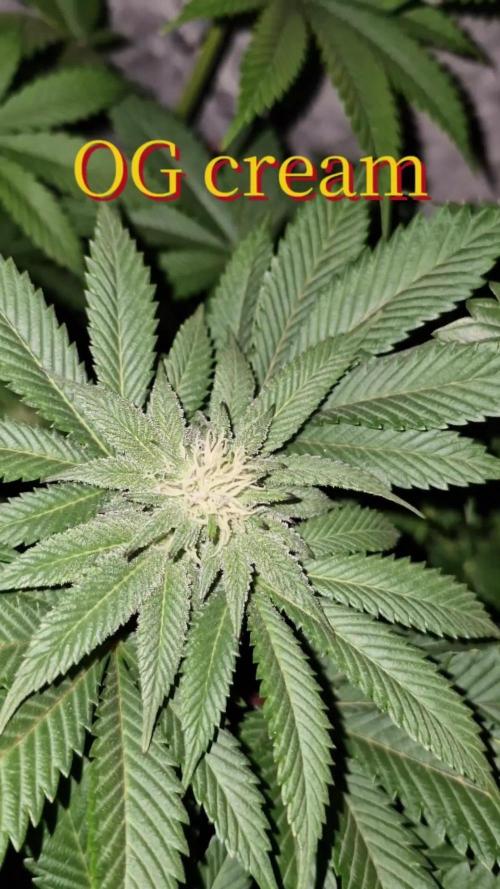The Grow Awards 2026 🏆 



























Likes
Comments
Share


@Manis
Follow
- 1st Day flowering for Ak (5/9)
- 1st Day flowering for Critical (8/9)
Likes
19
Share


@Bread_n_Buds
Follow
Here our King Luis, as I anticipated, have started off great and are starting to give their best.
In this diary you will find the plant worked with the techniques in this case the first topping was done, we cleaned everything else creating the Mainfold and we are going to work everything with the main lining. We are at the first topping and we have two mini branches growing good and are already addressed parallel to the soil, this is a delicate job.
The other one you will find in the diary next worked without the application of techniques that involve cuts to preserve its speed.
Comparison is the salt of experience.
We have started the Plagron fertilization program, we are in 100% organic configuration, the soil is recycled Promix + 1/3 fresh soil + 10% Perlite + RQS Mycorrhiza Mix (4gr in the mix, 1 gr under the small fiber pot).
We are administering // 1 ml/l of Power Roots - 1 ml/l of Pure Zym - 1 ml/l of Sugar Royal - 3 ml/l of Alga Grow
I have doubts about the compatibility of Pure Zym with mycorrhizae. If in doubt, ask the experts, do not mix too much at random.
https://plagron.com/en
The doubts about the compatibility Pure Zym / Mycorrhizae have been dispelled, they can go well together according to Plagron experts. If someone tells you that enzymes eat mycorrhizae, which in principle may seem possible, explain to them that it is not true.
https://www.royalqueenseeds.it/growing/452-easy-roots-mix-di-micorrhize.html
Try this variety, it is a top strain of the last few years very high level of thc ---- https://www.zamnesia.io/it/11238-zamnesia-seeds-king-louis-automatic.html
Brief description of Zamnesia // Say hello to true royalty with King Louis Auto, an autoflowering version of the original King Louis. Bred from OG Kush, LA Confidential and a premium ruderalis cutting, King Louis Auto delivers premium bud fit for a king just a few weeks after germination. As if that wasn't enough, her small size and vigor make her great for almost any grow environment. Incredibly efficient
King Louis Auto has inherited the best traits of her photoperiod cousin, all wrapped up in a fast and easy-to-grow seed. With good soil and adequate watering, King Louis Auto seeds will quickly grow into robust and vigorous plants. Once fully mature, these plants will not exceed 80cm indoors, meaning they can easily fit into even the smallest of grow spaces. Likewise, outdoor plants will only reach 100cm, making this strain ideal for guerrilla grows or other environments where discretion is key. And if that wasn't enough, King Louis Auto only takes 9–10 weeks from germination to harvest, after which she'll reward you with yields of up to 300g/m² indoors and 150g/plant outdoors. With its pungent terpenes and high THC levels, King Louis Auto offers a fragrant and relaxing experience. When you open your jars of buds, you'll immediately notice intense scents of pine, damp earth and fragrant wood. After inhaling her equally complex smoke or vapor, you'll be hit with a deep, relaxing body stone that's perfect for those moments of well-earned rest and relaxation. With 24% THC, King Louis Auto hits hard and takes effect within minutes, working every muscle in your body to relax. Perfect for evenings, weekends or any time you want to unwind. Buy your seeds now and experience the king of sweet strains.
You can find the whole world of growing on Zamnesia and more, just check out the site and you will find "all the best that nature has to offer" in various shapes and colours.
The new strains are fantastic and the old ones are no exception... p.s. no hermaphrodites so far, can you growers say the same?
_______________
www.zamnesia.com
Likes
Comments
Share


@RCUgrows
Follow
Plant is finishing up. The majority of the plant was taken down on day 84. A few buds were left on the plant so that the pollination of a few buds could let the seed develop
Processing
Likes
10
Share


@Geewiz
Follow
Hey guys! Thanks for stopping in to check out my babies! This is week 2 of flower (days 8-14).
This week things really seemed to take off! 🔥 Plants were happy all week long and seemed to grow almost an 1” per day if not more.
Buds are developing nicely, no smell yet but nice to see them stackin’. I cut out anything under the trellis that would end up being popcorn buds so the plants could focus on the main colas. Hoping I’ll just have to pull a few leaves here and there from now on.
The New Floraflex drip system has been nice! 💯 It has made watering easier and more automated. Water distribution isn’t perfect but I’m sure they aren’t 100% level either.
Plants should stop stretching after this next week and should start putting on some size! Stoked to see what these girls can do in week 3!
Day by day break down:
Day 8
Cut out some lower growth/ leaves blocking bud sites
Day 9
Fed all 6 plants. PH: 6.11, PPM: 1136
Day 10
Plants look great. Let them do their thing.
Day 12
Fed al 6 plants. PH: 6.05, PPM: 1264
Day 14
sitting at 29” tall right now. Not so stressed on height being be issue. Thinking they might be around 35-40” tall at the max.
Stay tuned for next weeks post to see how much these ladies have thickened up!
Likes
Comments
Share


@TheBulldozerSicily
Follow
Iniziamo un altro ciclo, la bella stagione è alle porte, anche quest'anno iniziamo indoor in idroponica e preparo 2 in vaso da passare in outdoor
Processing
Likes
5
Share


@Squaregrouper
Follow
The chunk bushed out, it is gaining vertical growth at a faster rate now.. the trunk should start flowering in the first week of August,according to my calculations I might be off a few days.
. It just started down pouring and the garden was fertilized yesterday so I expect some good gains
Likes
7
Share


@BushDoctor740
Follow
Well I have 6 little seedlings that sprouted looking happy and healthy.Going to give just plain water once the pots dry up a bit more.Ill add Gaia green 4,4,4 top dressing with a shot of recharge in a few days after these seedlings are stronger.Se7000 set at 30 percent power and is raised to the ceiling.I prefer to do this over lowering the lights and intensity and not being able to walk around and work in the ⛺️.Day 4 added a 1 inch layer of farm farm ocean forest and I’ll water plain ph tap water when the pots are dry.Also placed some pins and anchors to tie down branches for when the girls are ready for training :)
Likes
4
Share


@Kwall
Follow
Kept ppm around 550-750 and waterline at 9’. Last defoliation on day 18 of flower.
Likes
4
Share


@Stoner1419
Follow
All ladies doing well.👍
Bubblegum sherbet and Fat bastard seems around 1~2 weeks left,
so I start to give water without nutrients.
Some parts of buds chage color purple🍇
Permanent Marker needs more weeks.
bud size is not much bigger than last week but its gaining, very dense and smelly😍😍
Likes
15
Share


@HomegrowerDK
Follow
I love my west Coast OG from fastbuds..
The smell is crazy and after I touched a bud I couldn't believe the smell and the stickyness... Wow..
Aug 10 I just flushed today.. might have been feeding her to much last week and my leaves started to get brown spots...
Buds are getting thicker and they're very hard now..
Think I have 2 or 3 weeks left...
Been under the mars hydro sp150 and it's really doing it's job...
Update... After flush looks like pH is a bit high I guess but not crazy high
Likes
29
Share


@Spliffing_Around
Follow
Now they are a bit bigger , this is the start of week 2 , now day 19 in real time from germination.
I would appreciate any help to maximise the yield.
I feed around 500-600 ppm. How much should the drain be ? I have to plants struggling, one had 500 run off , should I give nutes or flush them more ?
Likes
9
Share


@phatty_mcnasty
Follow
Lot's more growth! It appears the stretch has mostly stopped. I put my zkittles on a platform to get it more in line with the canopy. The green crack/alaskan diesel really stretched. I have been pruning dying leaves and removed all of the LST. Letting the plants do their thing now that height has been controlled. It's looking like the zkittles will be my first strain available for harvest. Got my humidity down to around 40% after it drys out from watering. Still have a fan blowing air into the tent, and have been rotating the plants too for more even light/ to limit the risk of bud rot. Probably too many plants in my small space. Also noticed the light has always been at 24/0 as I never switched the timer on. Oh well!
Likes
10
Share


@Mo_Powers
Follow
Last week was just too rainy and stormy. It was in danger of being completely lost. I harvested it now to save what I could. I can't even imagine how big the harvest would have been if I had harvested the whole plant? Definitely over 1 kg. A really great landrace.
Likes
12
Share


@farah4weed
Follow
Hello guys 😍👽
This week is the most exciting time of my cultivation.
After we grew 10 og creams, today in the third week of flowering, all the seeds showed that they are feminized😍😍
My project has given the right result
But more important than this is the final product, which we compare with the father (og kush) and the mother (cake n cream) and the traits it inherited😍😍
Thanks for your comment🙏😍👽
"farah4weed"























